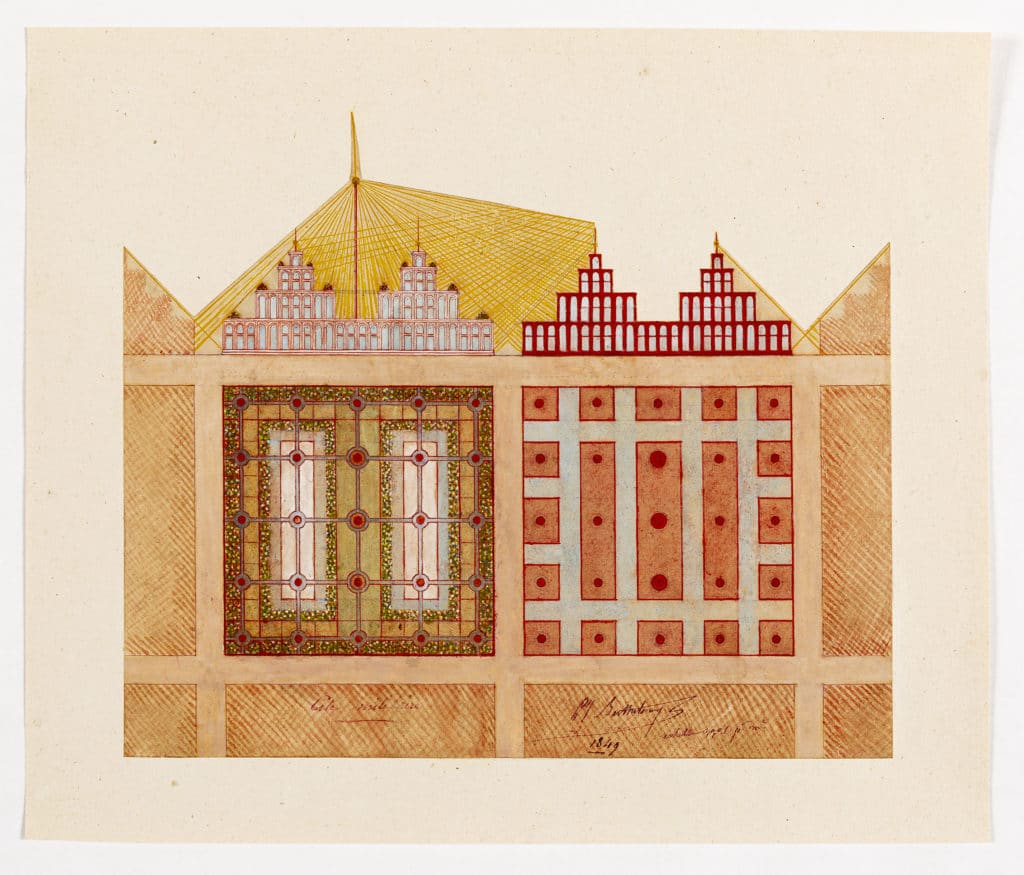Barthélemy Enfantin

This strange, flat drawing in watercolour, ink and pencil comprises a sheet of studies thought to be made by French economist and political theorist Barthélemy Prosper Enfantin in 1849. It depicts ideas for the organisation of a military complex, a cité militaire, possibly with Algeria in mind as a location. Enfantin published his treatise The Colonisation of Algeria just six years earlier, where he proposed the use of the military to establish settlements in which the social organisation and the collective system of ownership of tribes and villages would be respected. Speculation is the principal tool in interpreting this colourful drawing, which appears to show a fragment of this theoretical proposal that consists of two blocks in plan with two elevations surmounting them – one is a glass-house and maybe a garden, above which a very tall pole seems to focus and disperse the rays of the sun. A tiny shadow is left between the two blocks, and across the alley lies a sister building. This multi-faceted man Enfantin was a founder of the Saint Simonian movement and an advocate of industrialisation who worked for the railway industry. The structures in the drawing bear comparison with Joseph Paxton’s blotting paper sketch made in 1850 for the Crystal Palace. Both Isambard Kingdom Brunel and Robert Stephenson were members of the building committee.

– Matt Page